

Best Food Photography Books. ShareShare One of the most common questions we get from readers is what are the best food photography books out there?
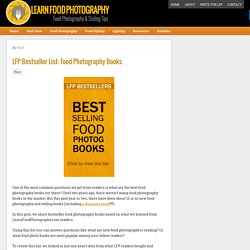
Until two years ago, there weren’t many food photography books in the market. 0321840739. Best New Books on Food Photography / 2016. Good food photography isn’t easy.
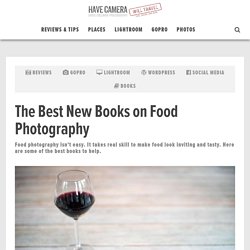
It’s not as simple as just whipping up a plate of food and firing off a quick snapshot or two. You have to make it look fresh. You have to make it look inviting. And most of all, you have to make it look tasty–delicious, even. And if you’re shooting for a restaurant, you need to convey the feel the owners and chefs are going for with their whole establishment. We’ve all seen those drab shots on the menu board of local takeout joints, often overhead shots under fluorescent lights that come out looking like a plateful of mush of a color your can’t quite describe.
That doesn’t necessarily mean investing in expensive cameras and lights. Top 10 Best Food Photographers in the World. The food is not only cooked and prepared to be eaten since it is also created in different stunning ways to be photographed.
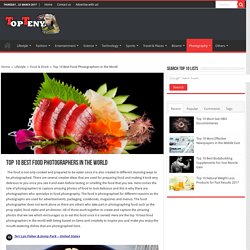
There are several creative ideas that are used for preparing food and making it look very delicious to you once you see it and even before tasting or smelling the food that you see. Here comes the role of photographers to capture amazing photos of food to look delicious and this is why there are photographers who specialize in food photography. The food is photographed for different reasons as the photographs are used for advertisements, packaging, cookbooks, magazines and menus. The food photographer does not work alone as there are others who take part in photographing food such as the prop stylist, food stylist and art director. Gift Guide: For the Aspiring Food Photographer. Whether you know someone who wants to get into food photography or you want to help someone upgrade their equipment, we've got plenty of recommendations including point-and-shoot cameras, DSLRs, lighting equipment, books, and more.
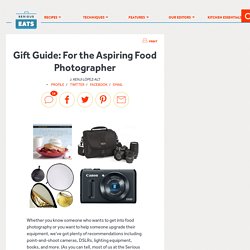
(As you can tell, most of us at the Serious Eats office are Canon users, which is not to say that other brands don't make competitive cameras in the same price points and with similar features!) A Good Point and Shoot For the highest quality images, you'll want a digital SLR (Single Lens Reflex) camera with its larger sensors and more customizable lenses that let in more light. But they have their downsides: they're bulky, and they're expensive. Sometimes, a good point-and-shoot at your side is all you need. Most Portable For true portability, I carry around a Canon S-series Powershot. Best Quality. Food-Styling 101: Pro-Tips to Step Up Your Game. Want to learn how to style great food photos?
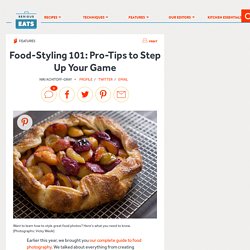
Here's what you need to know. [Photographs: Vicky Wasik] Earlier this year, we brought you our complete guide to food photography. We talked about everything from creating optimal lighting and composition to choosing the right props, equipment, and camera settings for your needs. With a little practice, these tips can take you from a discolored, distorted smartphone photo to something like this: But there's more to food photography than just, well, photography: professional stylists play an integral role in making magazine-quality shots look as viscerally appealing as possible.
So what does that process actually look like? The Serious Eats Guide to Food Photography. [Photographs: Vicky Wasik, unless otherwise noted] Taking great photographs of food is a hard-earned skill—after all, that's why some people are lucky enough to get paid for it.
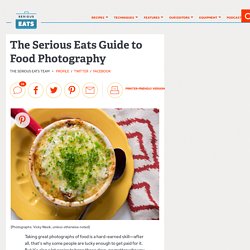
But it's also a lot easier to hone these days, no matter who you are; even a smartphone can yield gorgeous, high-quality images. Sure, professional cameras and lenses—provided you know how to use them—can make taking a great photo easier, but they're by no means necessary to the process. Just think of all the amazing Instagram feeds out there. What separates magazine-worthy photos from their less impressive counterparts isn't a fancy camera or expensive equipment. How to Photograph Food For Professional-Standard Shots. The Secret to Finding the Hero Angle in Food Photography. Have you ever stared at a photo of a food dish, and instantly thought that something looked a little odd?
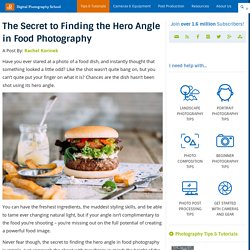
Like the shot wasn’t quite bang on, but you can’t quite put your finger on what it is? Chances are the dish hasn’t been shot using its hero angle. You can have the freshest ingredients, the maddest styling skills, and be able to tame ever changing natural light, but if your angle isn’t complimentary to the food you’re shooting – you’re missing out on the full potential of creating a powerful food image.
Never fear though, the secret to finding the hero angle in food photography is simple. Just approach the shoot with two things in mind; the height of the dish and/or the props, and the layers contained in them. The Height of Your Dish and Props The height of food basically falls into two categories; tall or flat. Tall subjects are simply anything with height – like a bundt cake, an ice cream cone, or a burger with the lot. But what about everything else? 15 Awesome Food Photography Tips.
Of all the types of things I photograph, shooting food probably comes the closest to being a full-blown DIY project.
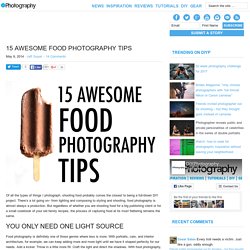
There’s a lot going on– from lighting and composing to styling and shooting, food photography is almost always a production. But regardless of whether you are shooting food for a big publishing client or for a small cookbook of your old family recipes, the process of capturing food at its most flattering remains the same. You Only Need One Light Source Food photography is definitely one of those genres where less is more. With portraits, cars, and interior architecture, for example, we can keep adding more and more light until we have it shaped perfectly for our needs. How to photograph food. 1.

Get the right kit It's a myth that you need a super-wow camera to take nice food photographs. Entry-level DSLRs are quite reasonably priced these days and if you're shooting for a blog, the picture quality will be more than adequate. It's worth investing in a nice lens if you're feeling flush, but I honestly think it's how you apply the technology you have that really matters. 2. Camera-mounted flashes are pretty much off-limits for food photographers; pouring in light front-on will flatten your dish and dispel any delicate natural shadows that were present beforehand. 3. Poor light is just one of those things. 4. While your viewer may only acknowledge them on a subconscious level, the choice of tablecloth/surface, plate and cutlery all subtly contribute to the mood and success of your shot. 5. 6. If it doesn't feel right, it probably isn't. Keep on shooting and follow your own rhythm. I was 19 years old when I discovered that studying to become a heart surgeon was going to take too long and that archaeology would probably be too boring, so I decided to become a professional photographer instead.
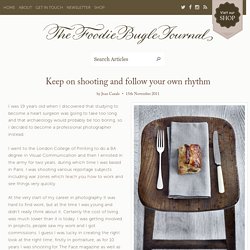
I went to the London College of Printing to do a BA degree in Visual Communication and then I enrolled in the army for two years, during which time I was based in Paris. I was shooting various reportage subjects including war zones which teach you how to work and see things very quickly. At the very start of my career in photography it was hard to find work, but at the time I was young and didn't really think about it. Certainly the cost of living was much lower than it is today. I was getting involved in projects, people saw my work and I got commissions. Guy Bourdin was my main reason for starting a career in photography. When I started my career it was a very different era. My working days vary hugely, even though the basic technicalities are the same. Keep on shooting and follow your own rhythm.